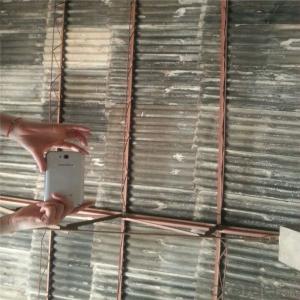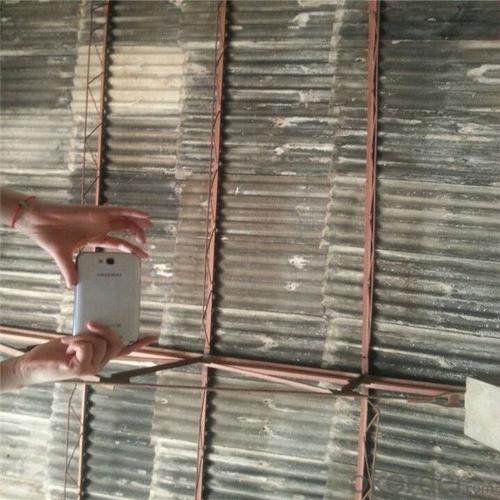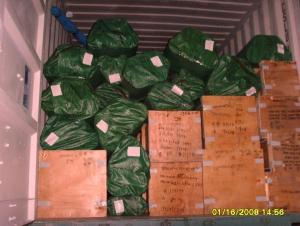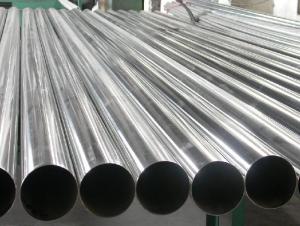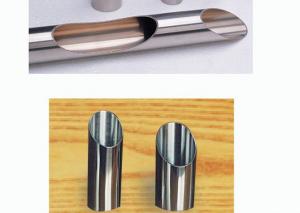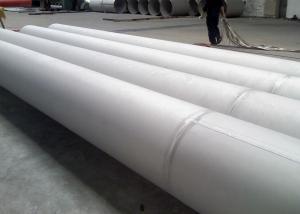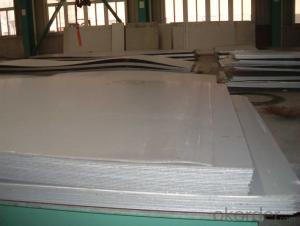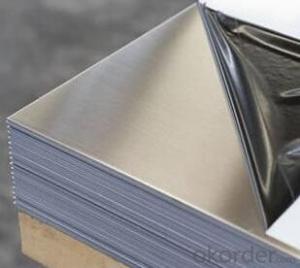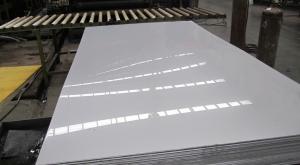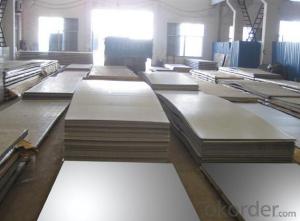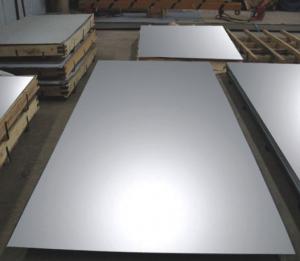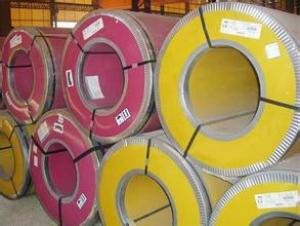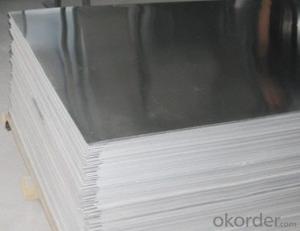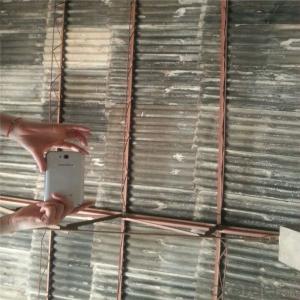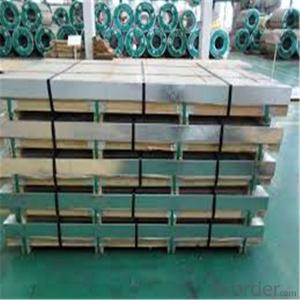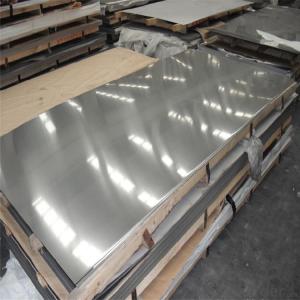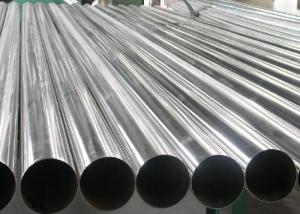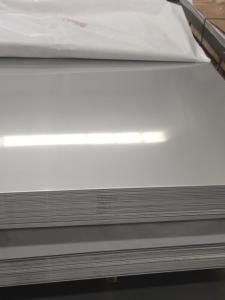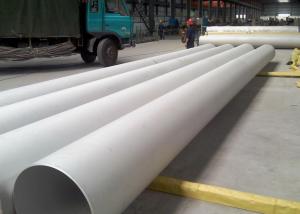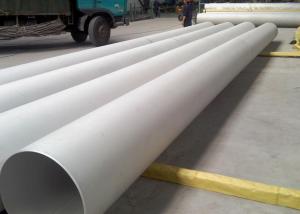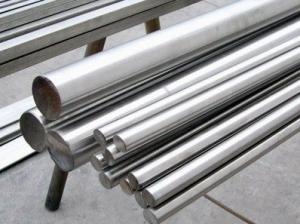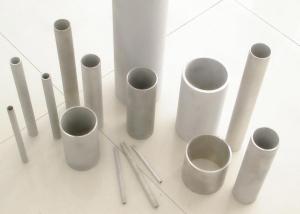1.4462 2b Stainless Steel Square Sheet/Plate
- Loading Port:
- Shanghai
- Payment Terms:
- TT OR LC
- Min Order Qty:
- 1 m.t.
- Supply Capability:
- 20000 m.t./month
OKorder Service Pledge
OKorder Financial Service
You Might Also Like
Specification
AISI,DIN Standard and 2205 Grade AISI2205 stainless steel sheets
We are a professional manufacturer of stainless steel sheet. According to ASTM, JIS and AISI,GB, standards, steel enhances effectiveness and of quality control from selecting the raw materials, cutting, slitting, shearing, surface treatment, packing, exporting of the existing products.
Product Description
Details of Stainless Steel Sheet/Plate: > > > > > > > > > > > > > > > > >
| Type | stainless steel plate |
| Name | duplex 2205 UNS S32205 1.4462 2b stainless steel square sheet/plate |
| Thickness | 0.3 mm - 50mm |
| Size | 1000*2000mm, 1219*2438mm, 1219*3048mm, customized Max.width 1500mm |
| SS Grade | 304,316, 201,430 etc. |
| Finish | Mirror +etch |
| Avaible finishes | No.1 Hairline, Mirror, Etching, Embossed, Vibration, Sandblast, Combination, lamination etc. |
| Origin | Huaxiang shandong |
| Packing way | PVC+ waterproof paper + strong sea-worthy wooden package |
Chemical composition | ||||
| Grade | STS304 | STS 316 | STS430 | STS201 |
| Elong(10%) | Above 40 | 30MIN | Above 22 | 50-60 |
| Hardness | ≤200HV | ≤200HV | Below 200 | HRB100,HV 230 |
| Cr(%) | 18-20 | 16-18 | 16-18 | 16-18 |
| Ni(%) | 8-10 | 10-14 | ≤0.60% | 0.5-1.5 |
| C(%) | ≤0.08 | ≤0.07 | ≤0.12% | ≤0.15 |
Products Show
These are the normal items, for the special requirements,we can also meet.
Surface finish | Characteristics and application |
NO.2B | The surface brightness and flatness of no2B is better than no2D. then through a special surface treatment to improve its mechanical properties,No2B could nearly satisfy comprehensive uses. |
NO.3 | Polished with abrasive belt of git#100-#200, have better brightness with discontinuous coarse stria, used as inner and external ornaments for building, electrical appliances and kitchen utensils etc. |
NO.4 | Polished with abrasive belt of grit #150-#180,have better brightness with discontinuous coarse stria,but thinner than No3, are used as bathtub buildings inner and external ornaments electrical appliances kitchen utensils and food processing equipment etc. |
HL | Polished with abrasive belt of grit #150-#320 on the NO.4 finish and has continuous streaks, mainly used as buildings ornaments elevators,door of building, frontal plate etc. |
BA | Cold rolled, bright annealed and skin-passed, the product have excellent brightness and good reflexivity like mirror,kitchen apparatus,ornament etc. |
8K | The product have excellent brightness and prefer reflexivity can to be the mirror. |
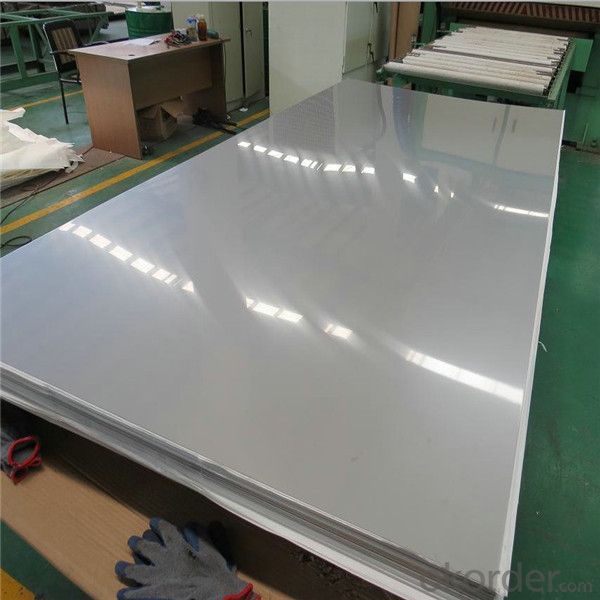
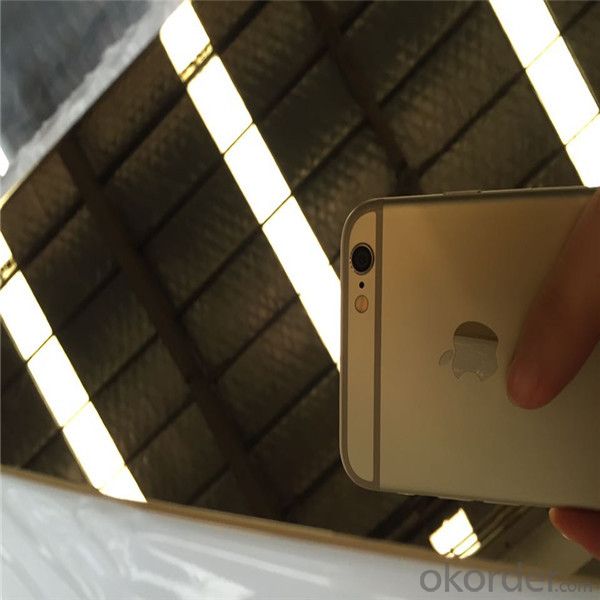
Our Advantages
• All products are made of high-quality imported raw materials.
• Our products are certified by ISO9001:2008 authentication quality systems.
• we are nominated as the AAA enterprise by Jiangsu government.
• Quick Response to Your Enquiry.
- Q: Can stainless steel sheets be used for decorative room dividers or partitions?
- Yes, stainless steel sheets can be used for decorative room dividers or partitions. Stainless steel is a versatile material known for its durability, strength, and resistance to corrosion, making it a popular choice for various applications. When used as room dividers or partitions, stainless steel sheets can add a sleek and modern aesthetic to any space. They can be customized with different finishes, such as brushed, mirrored, or patterned, to create a unique and decorative look. Stainless steel dividers or partitions are also easy to clean and maintain, making them a practical choice for high-traffic areas or commercial spaces. Overall, stainless steel sheets offer both functionality and style, making them suitable for use as decorative room dividers or partitions.
- Q: Are stainless steel sheets resistant to corrosion?
- Yes, stainless steel sheets are generally highly resistant to corrosion due to the presence of chromium in their composition, which forms a protective oxide layer on the surface. This oxide layer acts as a barrier, preventing the metal from being exposed to corrosive elements and ensuring its durability in various environments.
- Q: What are the benefits of using textured stainless steel sheets in retail displays?
- There are several benefits of using textured stainless steel sheets in retail displays. Firstly, textured stainless steel sheets can add a modern and sleek aesthetic to any retail space. The unique texture and reflective properties of stainless steel create an eye-catching display that can attract customers and enhance the overall appearance of the store. This can help in creating a memorable brand image and setting the retail space apart from competitors. Secondly, textured stainless steel sheets are highly durable and long-lasting. Retail displays often endure a significant amount of wear and tear due to constant handling and movement of products. Stainless steel, with its corrosion-resistant properties, can withstand these challenges and maintain its appearance even after prolonged use. This durability ensures that the retail displays remain visually appealing and do not require frequent replacements. Additionally, textured stainless steel sheets are easy to clean and maintain. In a retail setting, it is crucial to have displays that are presentable at all times. Stainless steel is known for its hygienic qualities, as it is resistant to stains, bacteria, and odors. This makes it easier to keep the displays clean and ensures a high level of hygiene in the store. Furthermore, textured stainless steel sheets are versatile and can be customized to fit various retail display needs. They can be easily cut, shaped, and formed into different sizes and designs, allowing for creative freedom in designing displays that align with the brand image and product theme. This versatility makes stainless steel sheets suitable for a wide range of retail environments, from high-end boutiques to industrial-style stores. Lastly, textured stainless steel sheets are environmentally friendly. Stainless steel is a sustainable material as it is 100% recyclable and can be repurposed without losing its quality. By incorporating stainless steel sheets into retail displays, businesses can contribute to reducing their environmental footprint and promote sustainability. In conclusion, the benefits of using textured stainless steel sheets in retail displays include their modern aesthetic, durability, ease of maintenance, versatility, and eco-friendliness. By utilizing these sheets, retailers can enhance their brand image, create visually appealing displays, and provide a positive shopping experience for their customers.
- Q: Can stainless steel sheets be used for architectural façades?
- Yes, stainless steel sheets can be used for architectural façades. Stainless steel is a durable and versatile material that offers many advantages for façade applications. It is resistant to corrosion, weathering, and staining, making it an ideal choice for exterior use. Stainless steel sheets can be fabricated into various shapes and sizes, allowing for a wide range of design options. Additionally, stainless steel can be finished in different ways, such as brushed, polished, or colored, providing further aesthetic possibilities. Its strength and rigidity also make it suitable for large-scale installations. Overall, stainless steel sheets offer durability, aesthetic appeal, and design flexibility, making them a popular choice for architectural façades.
- Q: What is the impact resistance of stainless steel sheets?
- Due to its unique properties and composition, stainless steel sheets exhibit a high level of impact resistance. This refers to their ability to withstand sudden loads or forces without suffering permanent deformation or breakage. The material possesses exceptional toughness and durability, rendering it highly resistant to impact. The impact resistance of stainless steel sheets can be attributed to their high tensile strength and ductility. This alloy, which contains iron, chromium, and other elements, contributes to its strength and corrosion resistance. The presence of chromium forms a protective oxide layer on the steel's surface, preventing easy rusting or corrosion. Moreover, stainless steel sheets are available in various grades, each with its own composition and properties. The most commonly utilized grade for impact-resistant applications is 304 stainless steel, which offers good resistance against impact and finds widespread use in industries such as construction, automotive, and aerospace. The impact resistance of stainless steel sheets also depends on their thickness. Thicker sheets tend to possess greater impact resistance due to their increased mass and structural integrity. However, even thinner stainless steel sheets can provide significant impact resistance owing to the inherent strength and toughness of the material. In practical applications, stainless steel sheets are frequently employed in environments where impact resistance is vital, such as in the manufacture of machinery, equipment, and structures subject to high loads or potential impacts. They can endure heavy impacts without cracking, fracturing, or deforming, thereby ensuring the integrity and longevity of the final product. Overall, stainless steel sheets exhibit excellent impact resistance, making them a preferred choice in various industries. Their high strength, corrosion resistance, and durability render them suitable for applications where resistance to impact is crucial.
- Q: How do you prevent chloride-induced corrosion in stainless steel sheets?
- There are various steps that can be taken to prevent corrosion in stainless steel sheets caused by chloride. These include: 1. Selecting the appropriate stainless steel grade that is resistant to chloride corrosion. Grades like 316 or 317 are particularly effective in resisting chloride attack. 2. Enhancing the resistance to chloride-induced corrosion by applying a passivation treatment to the stainless steel sheets. This treatment eliminates any surface iron contamination that might have occurred during fabrication and restores the protective oxide layer. 3. Ensuring proper cleaning of the stainless steel sheets on a regular basis to eliminate any chloride-containing contaminants that might have accumulated on the surface. It is important to maintain a clean surface as chloride ions can accumulate from sources like saltwater or cleaning products. 4. Minimizing contact with substances that contain chloride to significantly reduce the risk of corrosion. This involves avoiding direct contact with saltwater, cleaning agents that contain chloride, as well as chloride-rich environments such as swimming pools or coastal areas. 5. Taking design considerations into account in environments where chloride exposure is expected. This can involve using protective coatings, minimizing crevices or gaps where chlorides can accumulate, and ensuring proper drainage to prevent stagnant conditions. 6. Regularly inspecting and maintaining the stainless steel sheets to identify and address any potential corrosion issues before they worsen. This may include repairing surface damage, reapplying passivation treatments if necessary, and keeping the surface clean. By following these preventive measures, the risk of chloride-induced corrosion in stainless steel sheets can be significantly reduced, ensuring their long-term durability and performance.
- Q: What is the water resistance of stainless steel sheets?
- The water resistance of stainless steel sheets may vary depending on the grade and finish of the stainless steel. In general, stainless steel exhibits excellent resistance to water, making it suitable for a variety of wet and humid environments. The chromium content in stainless steel gives it inherent corrosion resistance, resulting in the formation of a protective oxide layer on the steel surface. This oxide layer acts as a barrier, preventing water and other corrosive substances from reaching the underlying metal. However, the water resistance can be further enhanced by selecting stainless steel grades with higher corrosion resistance, such as 316 or 904L. Moreover, the water resistance of stainless steel sheets can also be influenced by their surface finish. Smooth and polished finishes tend to offer better water resistance compared to rougher finishes, as they provide fewer crevices for water accumulation, which could potentially lead to corrosion. In summary, stainless steel sheets provide excellent water resistance and find extensive use in marine environments, food processing facilities, and outdoor architectural structures.
- Q: Can stainless steel sheets be used in outdoor applications?
- Yes, stainless steel sheets can be used in outdoor applications. Stainless steel is highly resistant to corrosion and oxidation, making it an ideal choice for outdoor use. It can withstand harsh weather conditions, including rain, snow, and UV radiation, without rusting or deteriorating. Additionally, stainless steel is highly durable and can withstand heavy loads and impacts, making it suitable for various outdoor applications such as cladding, roofing, fencing, and decorative elements. Its aesthetic appeal and low maintenance requirements also make it a popular choice for outdoor applications.
- Q: Are stainless steel sheets good for heat exchanger tubes?
- Yes, stainless steel sheets are commonly used for heat exchanger tubes due to their excellent heat transfer properties and corrosion resistance. Stainless steel has a high thermal conductivity, allowing for efficient heat transfer between fluids. Additionally, it has exceptional resistance to corrosion, which is crucial for heat exchangers that often come into contact with liquids or gases that can be corrosive. The durability of stainless steel sheets also ensures longevity and reliability for heat exchanger tubes, making them a popular choice in various industries such as chemical processing, power generation, and HVAC systems.
- Q: What are the benefits of using stainless steel sheets?
- There are several benefits of using stainless steel sheets. Firstly, stainless steel is highly durable and resistant to corrosion, making it suitable for various applications in different environments. Secondly, stainless steel is easy to clean and maintain, making it a hygienic choice for industries such as food processing and medical facilities. Additionally, stainless steel sheets have a sleek and modern appearance, making them aesthetically pleasing for architectural and design purposes. Lastly, stainless steel is recyclable and environmentally friendly, making it a sustainable choice.
Send your message to us
1.4462 2b Stainless Steel Square Sheet/Plate
- Loading Port:
- Shanghai
- Payment Terms:
- TT OR LC
- Min Order Qty:
- 1 m.t.
- Supply Capability:
- 20000 m.t./month
OKorder Service Pledge
OKorder Financial Service
Similar products
Hot products
Hot Searches
Related keywords
